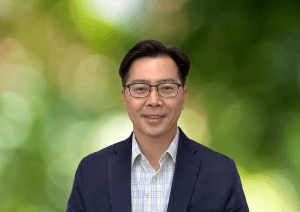Sleep Care Done Right: Transform Employee Health and Lower Total Cost of Healthcare


Increasing healthcare costs and the rising burden of chronic conditions are projected to increase by 6% in 2024 compared to 2023. Interestingly, some of the most expensive chronic conditions are closely associated with sleep disorders. In a recent From Day One webinar, experts from Nox Health discussed how companies can enhance the overall health of their workforce by promoting sleep care.
In this post-Covid workplace, the complexity of roles has increased, driven by an accelerating prevalence of concerns around behavioral and mental health. The general consensus, says Steve Cohan, EVP of commercial markets at Nox Health, is that we’re all facing a general kind of point solution fatigue.
So, how do organizations improve the overall coordination of care? Promoting sleep care “as a kind of a soft approach to a very hard issue,” is part of the solution, says Cohan. “Sleep is the golden chain that binds health and our bodies together,” he says, citing a quote from English dramatist Thomas Decker.
“If you look at the totality, about 50 to 70 million Americans actually have a chronic sleep-wake disorder,” Dr. Jason Ong, behavioral sleep medicine director shares.
The most common disorder is obstructive sleep apnea (OSA), a condition where there are pauses in your breathing that cause a sleep disruption. This causes people to generally be very, very sleepy or fatigued during the day, he says.
Chronic insomnia is another prevalent sleep disorder. It covers trouble falling asleep, trouble staying asleep, and even waking up too early and not being able to get the full amount of sleep.
Another common sleep condition is restless leg syndrome, a neuromuscular sleep disorder characterized by discomfort and a need to get up and move around. Circadian rhythm sleep-wake disorders are also common. This is where there is a misalignment between your body's natural clock and the time when you're trying to sleep or trying to be awake.

So, how do sleep disorders affect other chronic health conditions? And what are the consequences when you have one of these leading disorders? According to Dr. Ong, when you have sleep disruption, it affects the body and the systems within the body. With sleep apnea, for example, the body can suffer from elevated levels of cortisol and blood sugar, creating a cascade of reactions like heightened heart rate, blood pressure, and insulin levels, among others.
“So if you take a look at all these things that happen when our sleep is disrupted, it affects hormones, it affects cardiovascular systems, [and] metabolic systems,” said Dr. Ong. “And so you can see how all together this can really exacerbate chronic diseases such as hypertension, diabetes, heart disease, and stroke.”
Many healthcare members with sleep disorders cost double that of the average member, while members with two or more chronic conditions cost 46% of total healthcare costs. And yet, sleep-related costs account for less than 1% of total healthcare spending. So what can be done?
Cohan advocates for a whole-person approach. As people enter into a solution, the provider takes total ownership of the patient experience throughout all iterative steps from education, evaluation, testing, diagnosis, and then, importantly, value care.
The patient is then only billed once they have a diagnosis.
“So all of those iterative steps around making people aware, going through a very detailed evaluation, testing and diagnosis, including interaction with our sleep care specialists,” Cohan said. “Those all occur at no expense to the patient, no expense to the plan sponsor, only if the patient agrees to go on therapy, and then continues on therapy, is their billing incurred.”
At the moment, there are certain barriers to members adhering to and persisting with their treatment, says Jennifer Lindskoog, Nox’s SVP of client success. The first is a lack of understanding that they may have a sleep disorder. Second, upon diagnosis, the processes are typically uncoordinated and unsupported by an underlying clinically integrated care approach, leading to limited adoption of care.
For Nox Health, holistic care encompasses working with clients to build out an entire awareness campaign that’s not just dependent on a physician or on-site clinic referral.
This also includes an easily accessible app that includes a simple 13-question checkup that enables a member to understand the duration, timing and quality of their sleep. From here, members with potential sleeping disorders are automatically made eligible for medical intervention through their health plan. The system will then pop up a schedule of appointments with a board-certified sleep physician, only for their area and the times available.
This ensures the patient does not have to scroll through a list of physician appointments that may not even be for their area. From that physician's appointment, which is a visual telehealth appointment, the patient is often then recommended for a home-based sleep test with a very small kit that includes a device for diagnosing sleep apnea, insomnia, or restless leg syndrome.
After this comes an interpretation and appointment with the patient with a clinician to explain the results of the sleep testing, along with the recommended treatment plan. The result is an end-to-end solution that makes sure patients are supported from the initial diagnosis to treatment, promoting better sleep care and overall health.
Editor’s note: From Day One thanks our partner, Nox Health, for sponsoring this webinar.
Keren's love for words saw her transition from a corporate employee into a freelance writer during the pandemic. When she is not at her desk whipping up compelling narratives and sipping on endless cups of coffee, you can find her curled up with a book, playing with her dog, or pottering about in the garden.
The From Day One Newsletter is a monthly roundup of articles, features, and editorials on innovative ways for companies to forge stronger relationships with their employees, customers, and communities.